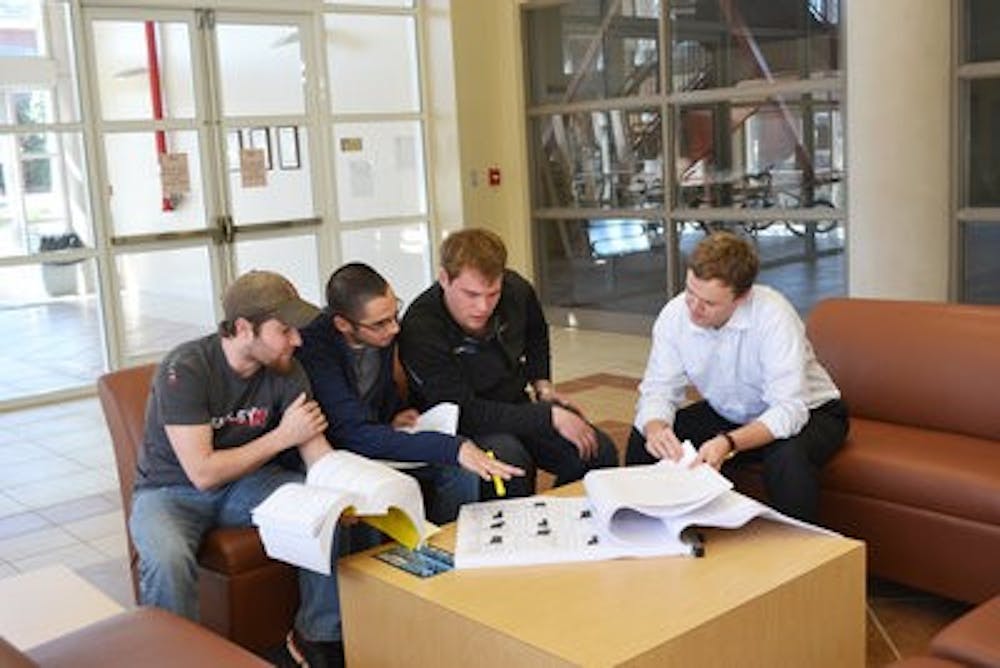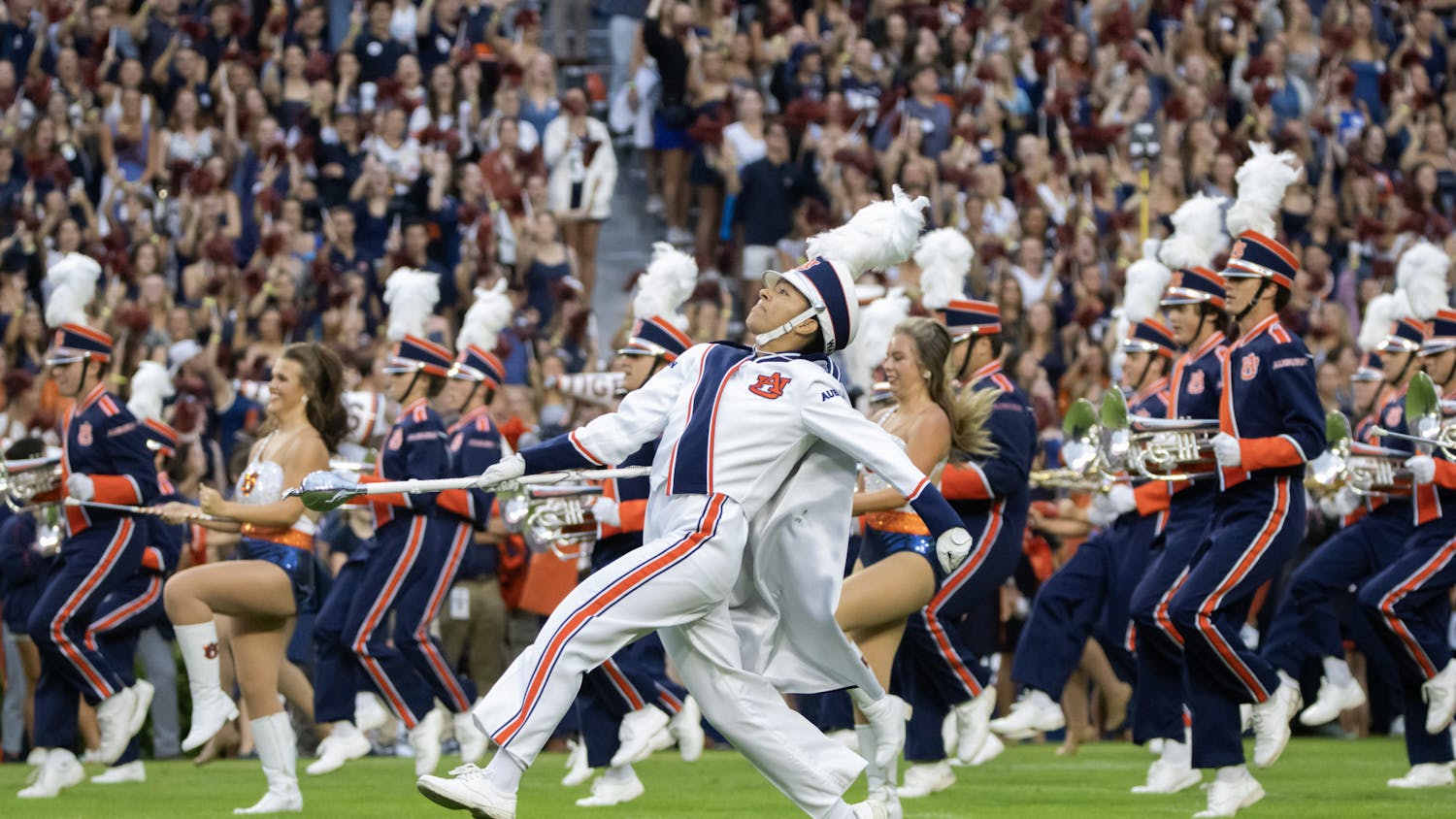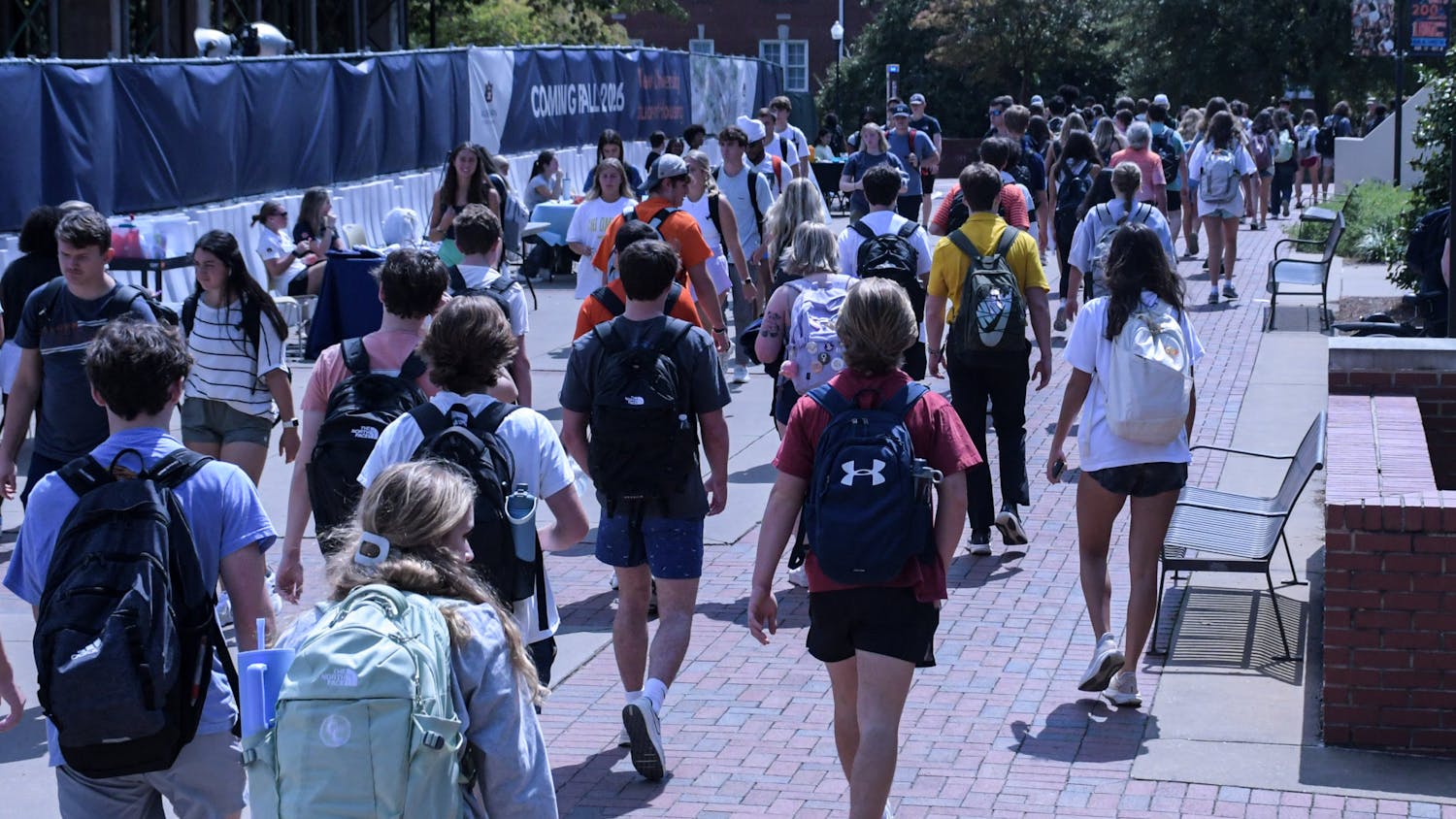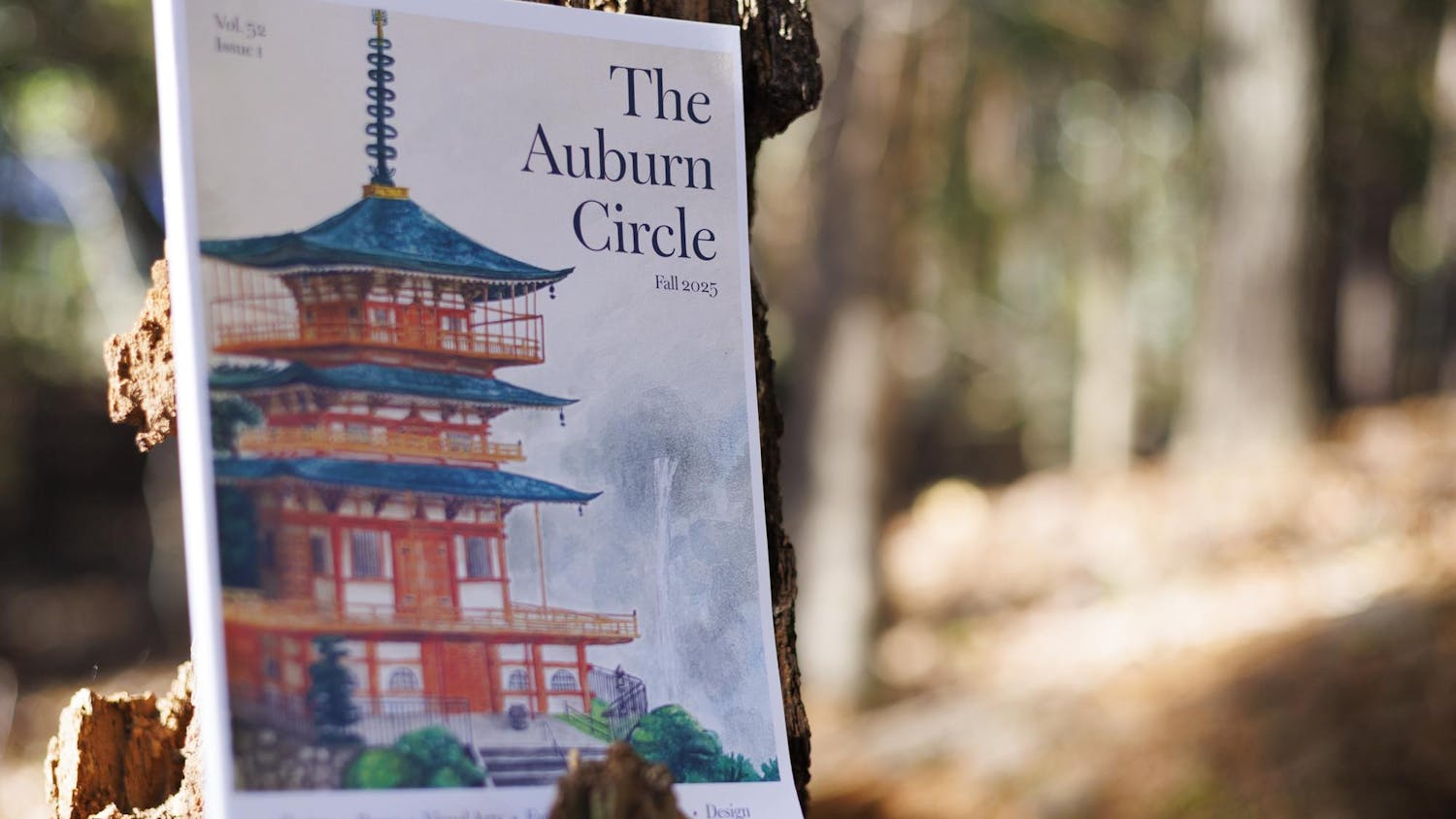Abandoning the usual PowerPoint-assisted coat and tie presentation, one of five Auburn building science teams decided on a more direct approach at the Associated Schools of Construction's National Electric Competition.
"We walked in there ... and laid it on the line," said Alex Behringer, senior in building science. "We took a huge risk."
Behringer was the team leader of the Auburn group that won first place in the competition Feb. 8-11 in Sparks, Nev.
Instead of preparing a formal presentation with a PowerPoint slideshow, the team took a table, butted it up against the judges' own and presented their project eye-to-eye.
Mark Tatum, coach of the first place team and associate professor of building science, said the team's decision for the presentation was "totally unrehearsed, unpracticed, not even talked about."
Tatum said teams at the competition usually present formally using technology. However, simple face-to-face meetings for design proposals are more common in real world situations, he said.
The six-member winning team consisted of Behringer, Wesley Sims, Bradley Clark, Kelly Kennamer, Drew Scott and Bentley Windle, all seniors in building science.
Behringer said they decided to focus on their strength--knowledge of the project--rather than a glossy presentation.
"When we walked into the room ... people in the room, their eyes were as big as the moon," Behringer said regarding their decision.
When the team was announced as the winner, Kennamer said the judges specifically praised their presentation format.
The competition requirements included a 149-page prequalification booklet, written proposal and oral presentation. Teams were tasked with creating a fictitious company, staffing it and presenting a thorough design proposal, Tatum said.
"It's a dash," Behringer said. "We don't get time in between. It's like a total absorption of what's in that project."
Behringer said the team was thankful to have Tatum's design background to better execute a well-rounded product.
"We were able to ... apply our knowledge from here to the construction aspect and apply the knowledge that we got from Tatum on a design aspect and kind of meet in the middle," Behringer said.
For many of the team members, the competition is not only a way to flesh out what they've learned in the classroom, but also to network for jobs.
Clark was recently hired by PCL Industrial Construction, a company he first met at a regional competition in Hoover and again in Reno, Nev.
"If you're looking for a job and you need something to put on a resume, to win first place at a national competition ... that's a big deal," Sims said.
The team said it was especially important that they learn to trust each other and delegate responsibilities.
"It's nice ... when you get overwhelmed to realize that five other people in the room know what they're doing," Sims said. "Where you're weak ... you got five other people who can pick up that slack."
Behringer said they worked hard to make sure every team member could help if someone stumbled during the presentation.
"We specifically made sure that for every point that we would've had to touch on, that two people would be able to be responsible," Behringer said.
Auburn's graduate team, coached by Mike Thompson, visiting industry professional, and Paul Holley, professor of building science, placed second in the graduate category. Thompson, along with Mike Hosey, instructor of building science, additionally coached the team for the preconstruction services category, which also placed second.
Kasey Entrikin, master's student in integrated design and construction, said the graduate team focused on excelling above the standards set out for them.
"They basically gave us an outline," Entrikin said. "They set a bunch of ... constraints and goals that we had to meet or build within. I thought that was extremely valuable."
One constraint was to include 750 beds in the $79 million student housing project they were tasked with designing. Entrikin said the team's proposal included not only more beds, but a higher quality project.
Holley said the differing backgrounds of the graduate team members created a diverse dynamic. Of the four team members, Washington State, LSU, Alabama and the University of Wisconsin at Milwaukee undergraduate programs were all represented.
"So in a sense they are drawing from their undergraduate experience at a different alma mater, but on the other hand they're representing Auburn at a graduate capacity," Holley said.
Do you like this story? The Plainsman doesn't accept money from tuition or student fees, and we don't charge a subscription fee. But you can donate to support The Plainsman.





